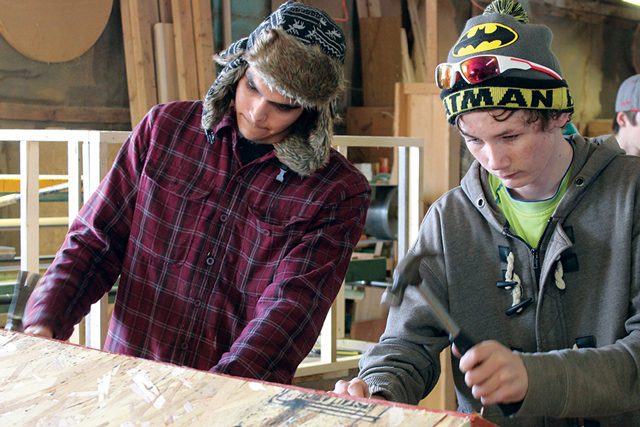Listen to this article
Listen to this article
Loading
Play
Pause
Options
0:00
-:--
1x
Playback Speed- 0.5
- 0.6
- 0.7
- 0.8
- 0.9
- 1
- 1.1
- 1.2
- 1.3
- 1.5
- 2
Audio Language
- English
- French
- German
- Italian
- Spanish
Open text
on the corner. by robert docter –. are you feeling kind of strange as this visioning process swirls around you? do you feel a little threatened that your corps might change? do you wonder what in the world might happen next? do you think it’s a good idea to ask everybody what they see as the army’s future? is this a revolution or something? why don’t we just go back to the way it was–when the commissioner told us what the campaign theme was– and it always had a nice biblical ring to it? those themes were always easy to ignore– and nobody checked up to see if they were being carried out or not. this visioning is kind of vague. maybe we should just leave well enough alone. have you had these thoughts? i think we all endorse relevant change until it hits close to home–us. they definitely need to change the way ihq runs. thq needs a significant overhaul–and the division–well, enough said. but why do we suddenly have to start looking at our own corps? too close for comfort. when change gets close to us, we discover there is pain in change. we have a hard time localizing it. it has a feeling tone somewhat similar to anxiety, only it’s more complex. the unnamed feeling gets mixed with loss as practices and procedures we have long revered as essential begin to be changed. we feel discounted–left out–ignored–unappreciated. stress is involved. it seems less pleasant to attend even though, much to our surprise, many seem to be enjoying some of the changes. loyalties get tested. sometimes the stress turns to anger. can depression be far behind? our thought patterns leap to extremes. we say to ourselves: “here we’ve been working in this corps for years, and they want to change it. we’ve built some great traditions that have real meaning–especially for people who have been around as long as we have. we’ve contributed a lot of time and energy–laid a lot of carpet, painted a mile of walls, attended innumerable meetings–and now people want to embrace some other ideas about how to run the corps. whatever happened to the “good old army”? why do we have to sing these choruses that go on and on– with people clapping and bopping around? why not do it the ‘army way’ and wave soiled handkerchiefs? and how come these choruses aren’t accompanied by a brass band? and what’s all this hand raising business? is this the army? this kind of thinking leads to an us-or-them point of view. we look around and stereotype those whom we believe to be embracing the “new” approaches. we begin to wonder about them–talk about them more but speak to them less. to us, they represent “the other side.” we pick up vibrations from others whom we believe think our kind of thoughts–the right ones, of course. these are the people we spend time with. their thoughts feed our thoughts–and everything is negative. we’ve got a sledge hammer in our hands and we’re busy driving a wedge. all of this occurs because we don’t know how to deal with the pain of change. we deliver the pain to ourselves. it’s self-inflicted. we need to recognize its reality, understand what precipitates it and find ways to move toward acceptance of the process. what we do with the process depends on the nature of the change. we must base our examination of change on values: not symbols–not means–not words–not techniques. we won’t know what values we wish to preserve if we are unaware of them, or if they are unclear to us. here’s what to do about the pain. first, identify your feelings and the source of your feelings. second, clarify your values. third, separate non-essentials from essentials. fourth, share your values. fifth, keep lines of communication open among those around you. sixth, negotiate the change process and share your values. seventh, help the group set time-lines to test the effectiveness of change. eighth, determine the means to evaluate the success of the change. ninth, work to make the change successful. tenth, pray long and hard.
Open context player
Close context player
Plays:-Audio plays count
on the corner. by robert docter –. are you feeling kind of strange as this visioning process swirls around you? do you feel a little threatened that your corps might change? do you wonder what in the world might happen next? do you think it’s a good idea to ask everybody what they see as the army’s future? is this a revolution or something? why don’t we just go back to the way it was–when the commissioner told us what the campaign theme was– and it always had a nice biblical ring to it? those themes were always easy to ignore– and nobody checked up to see if they were being carried out or not. this visioning is kind of vague. maybe we should just leave well enough alone. have you had these thoughts? i think we all endorse relevant change until it hits close to home–us. they definitely need to change the way ihq runs. thq needs a significant overhaul–and the division–well, enough said. but why do we suddenly have to start looking at our own corps? too close for comfort. when change gets close to us, we discover there is pain in change. we have a hard time localizing it. it has a feeling tone somewhat similar to anxiety, only it’s more complex. the unnamed feeling gets mixed with loss as practices and procedures we have long revered as essential begin to be changed. we feel discounted–left out–ignored–unappreciated. stress is involved. it seems less pleasant to attend even though, much to our surprise, many seem to be enjoying some of the changes. loyalties get tested. sometimes the stress turns to anger. can depression be far behind? our thought patterns leap to extremes. we say to ourselves: “here we’ve been working in this corps for years, and they want to change it. we’ve built some great traditions that have real meaning–especially for people who have been around as long as we have. we’ve contributed a lot of time and energy–laid a lot of carpet, painted a mile of walls, attended innumerable meetings–and now people want to embrace some other ideas about how to run the corps. whatever happened to the “good old army”? why do we have to sing these choruses that go on and on– with people clapping and bopping around? why not do it the ‘army way’ and wave soiled handkerchiefs? and how come these choruses aren’t accompanied by a brass band? and what’s all this hand raising business? is this the army? this kind of thinking leads to an us-or-them point of view. we look around and stereotype those whom we believe to be embracing the “new” approaches. we begin to wonder about them–talk about them more but speak to them less. to us, they represent “the other side.” we pick up vibrations from others whom we believe think our kind of thoughts–the right ones, of course. these are the people we spend time with. their thoughts feed our thoughts–and everything is negative. we’ve got a sledge hammer in our hands and we’re busy driving a wedge. all of this occurs because we don’t know how to deal with the pain of change. we deliver the pain to ourselves. it’s self-inflicted. we need to recognize its reality, understand what precipitates it and find ways to move toward acceptance of the process. what we do with the process depends on the nature of the change. we must base our examination of change on values: not symbols–not means–not words–not techniques. we won’t know what values we wish to preserve if we are unaware of them, or if they are unclear to us. here’s what to do about the pain. first, identify your feelings and the source of your feelings. second, clarify your values. third, separate non-essentials from essentials. fourth, share your values. fifth, keep lines of communication open among those around you. sixth, negotiate the change process and share your values. seventh, help the group set time-lines to test the effectiveness of change. eighth, determine the means to evaluate the success of the change. ninth, work to make the change successful. tenth, pray long and hard.
Listen to this article












